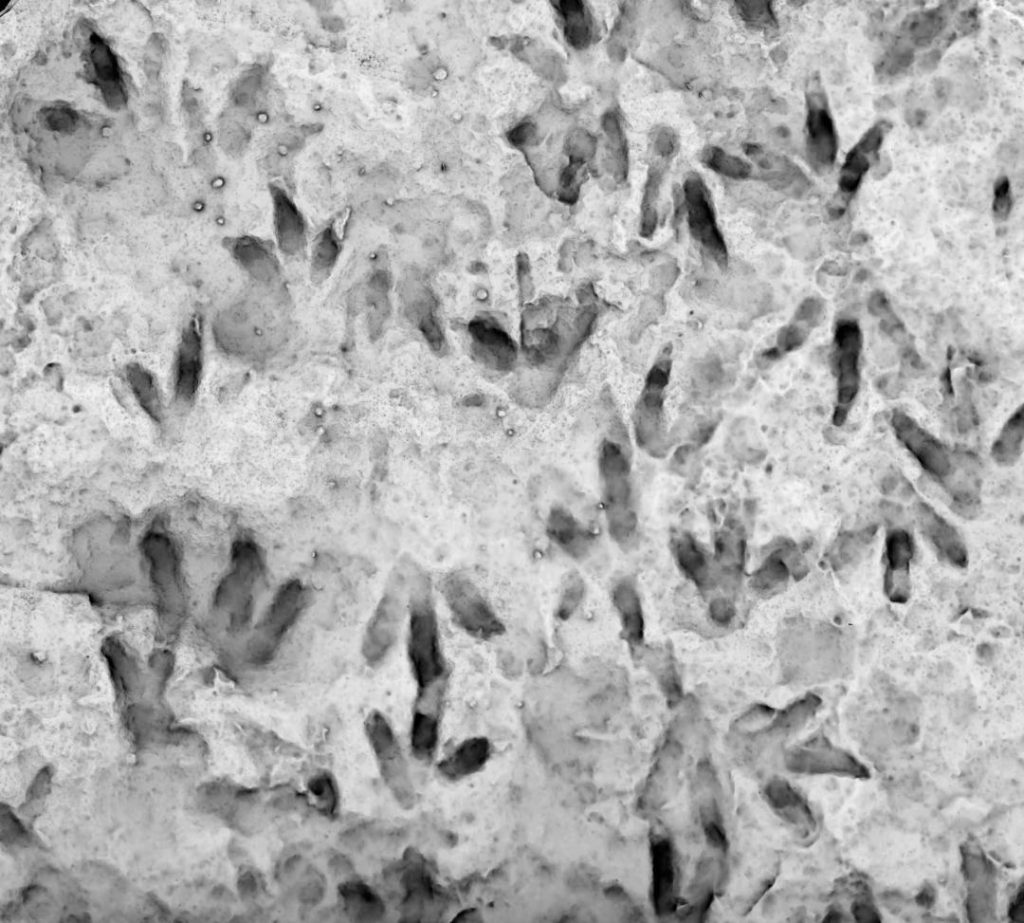
200-Million-Year-Old Dinosaur Footprints Found on Rock in Australian School
In a remarkable discovery, a researcher from the University of Queensland has found 200-million-year-old dinosaur footprints on a rock at a local school in Australia. The incredible find, made by Anthony Romilio, includes 66 fossilized footprints from 47 individual dinosaurs. Each footprint has three toes, indicating that they belong to the ichnospecies Anomoepus scambus.
The rock in question had been present at the school in Biloela for over 20 years, without anyone realizing its significance. It wasn’t until Romilio’s expertise was called upon to analyze the rock that the true nature of the rock was revealed.
The discovery is significant not only because of the age of the footprints but also because it provides valuable insights into the lives of dinosaurs that lived during the Triassic period, around 200 million years ago. The Triassic period was a time of great change on Earth, with the supercontinent of Pangaea beginning to break apart and the first dinosaurs emerging as dominant land animals.
The footprints found on the rock are believed to have been made by a group of small to medium-sized dinosaurs that lived in a floodplain or river delta. The presence of the footprints in a rock formation suggests that the area was once a densely forested region, with the dinosaurs roaming freely through the landscape.
Each of the 66 footprints is unique, with some showing signs of wear and tear, indicating that the dinosaurs may have used the same path repeatedly. The footprints also provide valuable information about the gait and movement patterns of the dinosaurs, which can help scientists better understand how they lived and interacted with their environment.
The discovery of the dinosaur footprints is also significant because it provides a rare glimpse into the lives of dinosaurs that lived during the Triassic period. While many dinosaur fossils have been found, footprints provide a unique window into the behavior and movement patterns of these ancient creatures.
The find is also a testament to the importance of preserving natural history collections and the value of collaboration between researchers and local communities. The rock was initially found at the school by a student, and it was only through the efforts of the school and the University of Queensland that the discovery was made.
The discovery of the dinosaur footprints is a reminder of the importance of preserving our natural history and the value of interdisciplinary research. It also highlights the potential for unexpected discoveries in unexpected places, and the importance of collaboration between researchers and local communities.
In conclusion, the discovery of 200-million-year-old dinosaur footprints on a rock in an Australian school is a remarkable find that provides valuable insights into the lives of dinosaurs that lived during the Triassic period. The footprints are a testament to the importance of preserving natural history collections and the value of collaboration between researchers and local communities.






